| |
| Architectural Models 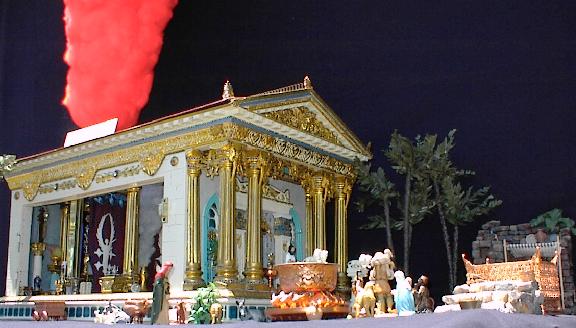
Mount Moriah, in the days of Abraham, was one of the hills in the vicinity of Salem, the one chosen by Abraham upon which to sacrifice his
only son Isaac "as a burnt offering" unto the Lord. In later years it came under the control of the Amorites, whose principal city, Jebus, occupied a hill westward from Moriah.Genesis 22: 2. In the days of King David, who subdued the Jebusites, it became a part of the city named Jerusalem. It is 14 1/2 miles from Jordan, 15 miles from Salt Sea, and 41 miles from the Mediterranean. The location was not the most desirable one on which to erect the Temple, but was chosen by Solomon because of its sacred associations. It was fitting that the great Temple to be dedicated to the God of his fathers should be erected upon the very spot where Abraham made manifest that faith in Him which was accepted ever after by the children of Israel and the world. On this spot also, where Abraham offered Isaac, David made an acceptable offering unto the Lord, and by faith saved Jerusalem from destruction. David no doubt realized the significance of the name given to the Mount by Abraham, "Jehovah Sees," and ever after the children of Abraham found consolation in the thought, "In the Mount of Jehovah He will be seen." Solomon, in deciding to erect the Temple upon this sacred spot, fulfilled the wishes of his father, King David, and of all in whose breasts these sentiments were cherished. "Beautiful for Situation, the Joy of the whole Earth." 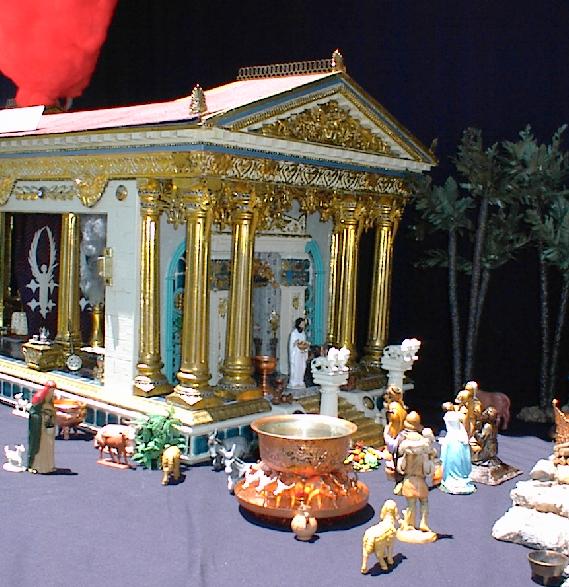
Architecture of the Temple
The assemblage of the world's architectural genius at Jerusalem,and the amassed store of materials of gold, silver, brass, iron, granite, and marble, together with the precious stones and costly woods and fabrics brought from foreign shores, resulted in a structure distinctive in design, gigantic in proportions, and glorious in embellishments, the like of which Israel and the people of that day had never before seen, and which will never again be equaled, much less excelled. The Temple and the Palace together, as a unit, consisted of a series of terraces round about Mount Moriah, the highest point of which was crowned by the Great Porch, with the Holy and the Most Holy Place. The second highest terrace, surrounding the Mount, was an oblong or
rectangle, 1,600 feet long and 800 feet wide, having a retaining wall rising from the base of the Mount to a height of from 80 to 240 feet as conditions required for support, for defense, and to produce a uniform raised level about the Mount. Within this first enclosure the architects provided homes for the porters and singers, as well as havens for the worshipers. The upper terrace was 800 feet long and 400 feet wide, surrounded by a retaining wall of great stone. The eastern half of this second enclosed terrace or court was embellished by three rows of hewed stones or pillars, round about, forming a colonnade and supporting an entablature of cedar beams and costly stones. The Covert for the King was located on the north side and was of solid brass. In the western half of this oblong enclosure, and on the north side, was the Court for the women, surrounded by high walls and enclosing a series of chambers suitably arranged. To the south was the Court of the Priests, containing the chambers for those who were actively engaged in the Temple services. In the center of the western half of the great court was the inner court, 400 feet by 200 feet in size, in the form of a rectangle, surrounded by a cloistered colonnade of three rows of pillars supporting a beautiful entablature of cedar beams and costly stones. The only entrance to the inner court was through the Great Gate on the eastern side. In the center of the eastern half of the inner court stood the Great Altar of Burnt-offering. In the southeast corner was the Molten Sea, and on the north and south sides, five on each side, were the Lavers. The western square of the inner court contained the House, or Holy and Most Holy Places, surrounded by a series of chambers. The approach to these sacred precincts was through the Great Porch, rising to a height of 240 feet. These crowning terraces which supported the Temple and King Solomon's Palace or Citadel, including his house, the House of the Forest of Lebanon, the Queen's Palace, the Porch of Pillars, and kindred structures, were surrounded for the sake of security by a wall which began at the bottom of the Mount. Some of the sides of this wall were reared 280 feet in height before they attained the desired level, and these massive and curious bases, together with the super-structure, formed an impressive prospect, which was the marvel of all beholders. 2 Chron. 3: 4. Approaching the Temple terraces from the southwest was a road leading through a gate into the great citadel, within the walls of which were the numerous buildings. The citadel was on an elevation just below that of the Temple, and visitors to the latter had to pass through the former. Here were the King's Palace, the House of the Forest of Lebanon, the Porch of Pillars, the Queen's Palace, the Tower of David, the Palace of the Captain of the Host, the Palace of the High Priest, and the Judgment Seat or Throne. Within this same enclosure were to be found the homes of the Royal Harem, and of the immediate official family and attendants. Here also were the Royal Gardens in which were to be found a great variety of trees and beautiful shrubbery, and enclosures for wild and domestic animals and birds.
The King's Palace, the House of the Forest of Lebanon, and the other
royal buildings were of a size and magnificence such as Israel had never seen before, and were prized because they reflected the high political rank of the nation, as the Temple reflected the glory of its religious institutions. The road from the southwest gate ran diagonally northeastward to a central square which was dominated by the Tower of David. At the south of the square was the Court of Guards, at the west of the Queen's Palace, and at the east the Palace of King Solomon. 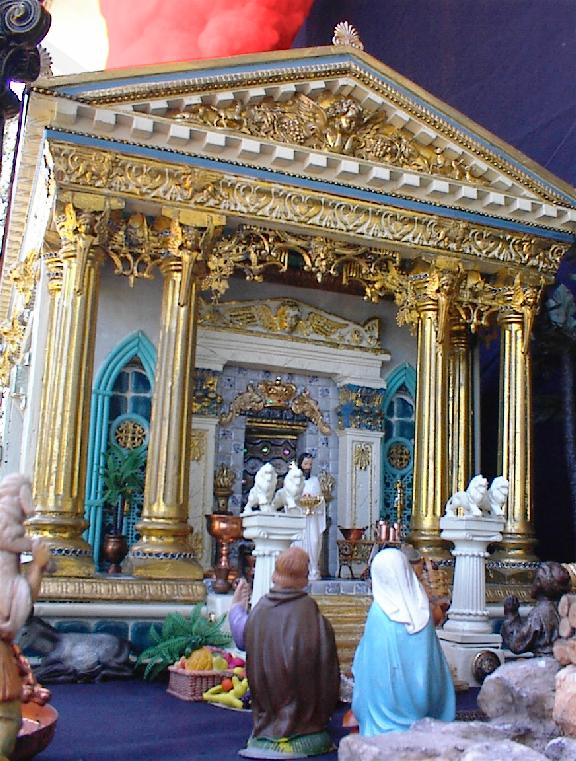
The Inner Court of the Temple
The avenue from the southwest gate of the citadel, having passed the
Palaces, the Porches, and the House of the Forest of Lebanon, proceeded again northeastward to an open space before the House of the High Priest, where there was a gate leading upward to the Forecourt of the Temple. This outer court occupied the whole of the eastern half of the Temple terrace, and on its northern side was the great brass Covert for the King. At the western side of the Forecourt was the gate to the Inner Court, whence rose the facade of the Temple itself.
The Altar of Burnt-Offering
In the center of the eastern half of the inner court stood the most
indispensable part of the apparatus of worship, the Altar of Burnt-offering, made of brass, "twenty cubits in length, twenty in breadth and ten cubits in height" (40 feet long, 40 broad, and 20 high). 2 Chron. 4: 1.
The Molten Sea
The inner court, the southeast corner, stood the most striking of the
creations of Solomon's Phoenician artist, Hiram of Tyre. This was the
Molten Sea. It was a large circular tank of bronze, "thirty cubits in
circumference, ten cubits in diameter and five cubits in height" (60 feet
around, 20 feet across, and 10 feet high), with a brim the thickness of a
handbreadth. These measurements show that Hiram understood the principles of circular form and construction. This great sea rested on the backs of twelve bronze bulls which, in groups of three, faced the four cardinal points. 1 Kings 7: 23-27; 2 Chron. 4: 2-5.
The Lavers
There were ten Lavers of brass raised on bases resting upon wheels.
They were used for washing the animals to be sacrificed in the
burnt-offering and in the general cleansing of the court after the
services. Each one was "four cubits long, four cubits wide and three cubits high" (8 feet by 8 by 6). The Lavers, bases, and wheels were highly ornamented, and symbolically embellished with lions, oxen, cherubim and palm trees. Five of the Lavers stood on the north side of the inner court and five on the south side. 1 Kings 7: 27-39. 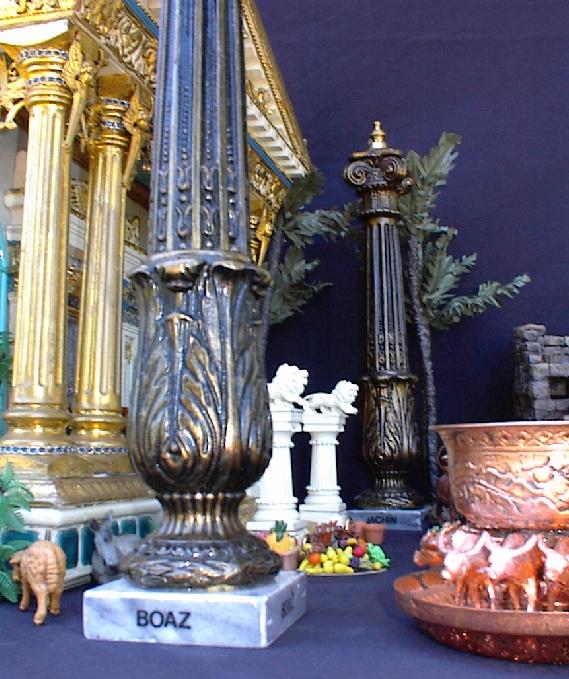
The Great Porch
The Great Porch was a monumental structure "one hundred and twenty cubits high" (240 feet), built over the entrance to the Sanctuary. This entrance or vestibule was "twenty cubits long and ten cubits broad" (40 feet by 20). Through this porch the priests were admitted to the Sanctuary. 2 Chron. 3: 4; 1 Kings 6: 3.
The Two Pillars of Brass
These two great bronze shafts, standing in relief, formed an important feature in the architecture of the Temple. Each one was "thirty-five cubits high and twelve cubits in circumference" (70 feet high and 24 feet in circumference). They were highly ornamented by a network of brass, overhung with wreaths of bronze pomegranates, each row containing one hundred. Upon the pillars and the top of the chapiters were pommels (great bowls or vessels for oil) over which were hung, festoon-wise, wreaths of pomegranates, interspersed here and there with lily work. They bore the names of Jachin and Boaz and were placed in front of the porch leading to the Sanctuary. 2 Chron. 3:15; 1 Kings 7: 15-22; 2 Chron. 4:12-13. 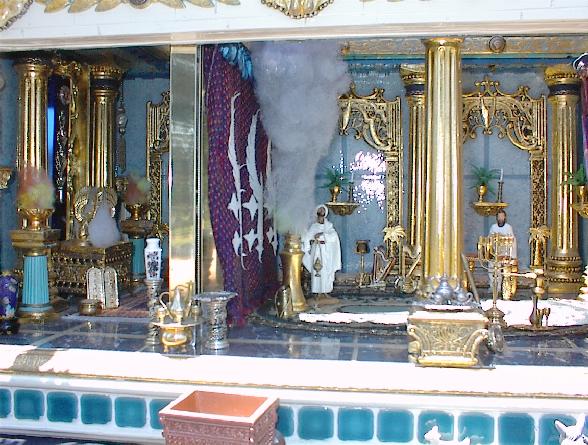
The Holy Place
The Holy Place, or Greater House, was a double cube "forty cubits long, twenty cubits wide, and twenty cubits high" (80 feet long, 40 wide, and 40 high), "ceiled with fir tree," overlaid with fine gold and settings of palm trees and chains, with engraved cherubim on the walls. The entire house was garnished with precious stones for beauty. The entrance to the house was by a large double door, two leaves to the one door and two leaves to the other, of olive wood, carved with cherubim, palm trees, and open flowers, all overlaid with pure gold. The furniture of the Holy Place consisted of ten candlesticks of pure gold, five on the right side and five on the left, together with their lamps and snuffers; also ten tables with pure gold, five on the right side and five on the left, together with their bowls, basins, spoons, and covers. To these must be added the golden altar of incense and its censer, the table of shewbread, and the golden candlestick of the Tabernacle, all harmoniously arranged within the walls, ceilings, and floors of gold set with precious stones. 1 Kings 7: 49; 2 Chron. 4: 8. The Most Holy Place
The Holy of Holies was a perfect 40 foot cube "twenty cubits broad, twenty cubits long, and twenty cubits high." All the walls round about were carved with figures of cherubim, palm trees, and open flowers, all overlaid with pure gold; even the floor was overlaid with gold, and all was garnished with precious stones for beauty. The two doors leading to this Most Holy Place were of olive wood, cunningly carved with cherubim, palm trees and open flowers, and overlaid with pure gold. Each door had two leaves which folded. Over this entrance hung the veil of blue, purple, and crimson of the finest fabric, cunningly wrought with cherubim, palm trees, and open flowers. This beautiful tapestry defined the entrance to the Oracle. The only piece of furniture in the Most Holy Place was the Sacred Ark of the Covenant of the Lord, containing the testimony. This was the place within the oracles shadowed by the wings of two gigantic cherubim of olive wood, overlaid with pure gold. Each cherubim was "ten cubits high" (20 feet) with an outspread of wings of "twenty cubits) (40 feet). 1 Kings 6:23.
The Temple and Eternity
King Solomon's Temple was the perfect architectural expression of the religious faith of a people. As such, it has never been equaled in the history of the world, much less excelled. Its actual life was short, but is influence has been incalculable. Built to endure for centuries, only a few years elapsed before it was desecrated and then completely destroyed by invading armies. Yet its fame did not die. The children of Israel, with fervid determination, rebuilt it twice, and twice more it was destroyed. The descendents of its builders were scattered far and wide over the face of the earth, but the traditions of their labor and their unity and their accomplishment have remained to inspire all subsequent ages, and the magnificence of the Temple they built is still acknowledged as the epitome of gorgeous architecture. 
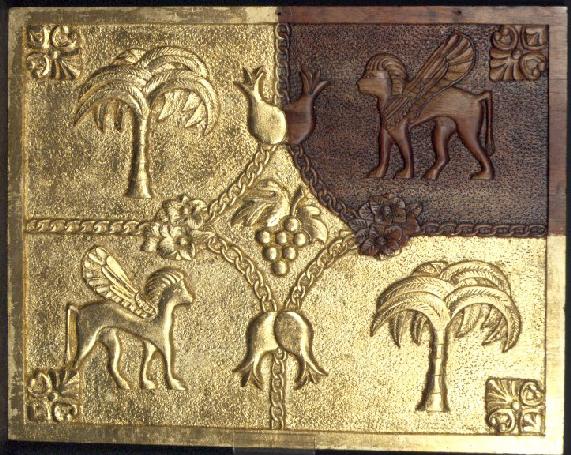
The Interior Walls of King Solomon's Temple 1 Kings 6:18, 21, 35 18 And the cedar of the house within was carved with knops (almonds) and open flowers: all was cedar; there was no stone seen. 21 So Solomon overlaid the house within pure gold: and he made a partition by the chains of gold before the oracle (ark); and he overlaid it with gold. 35 And he carved thereon cherubim's and palm trees open flowers: and covered them with gold fitted upon the carved work. 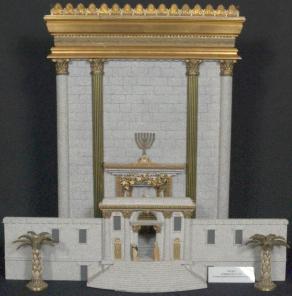 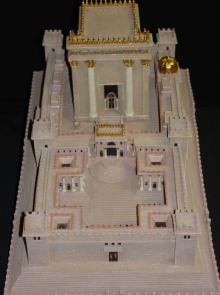
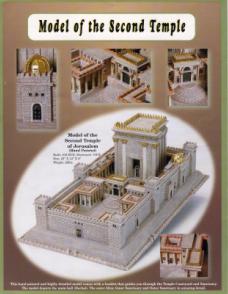 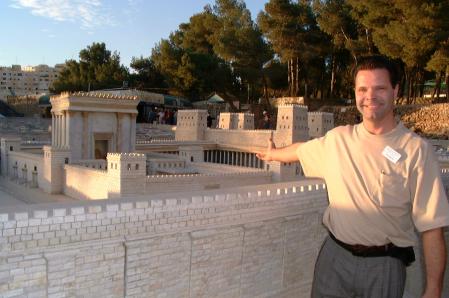

|
ไม่มีความคิดเห็น:
แสดงความคิดเห็น